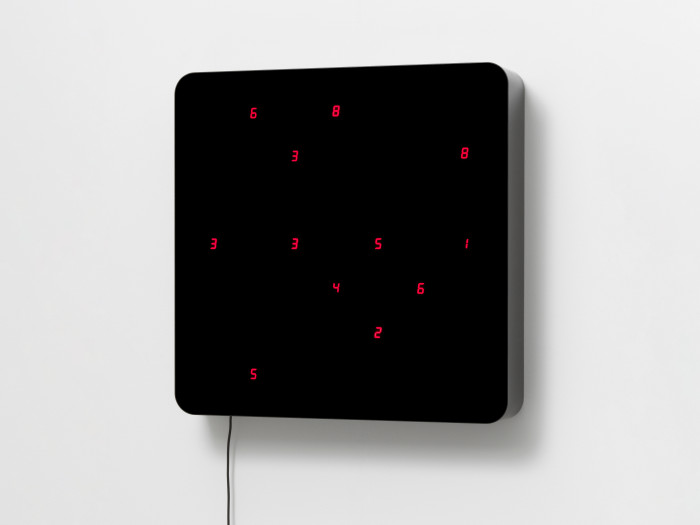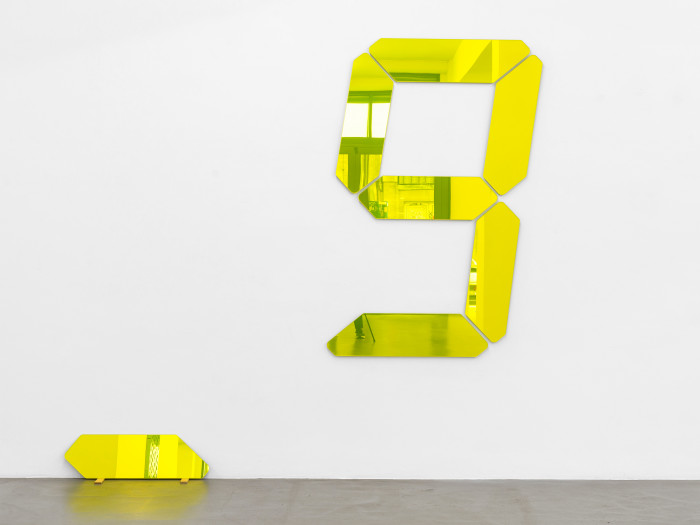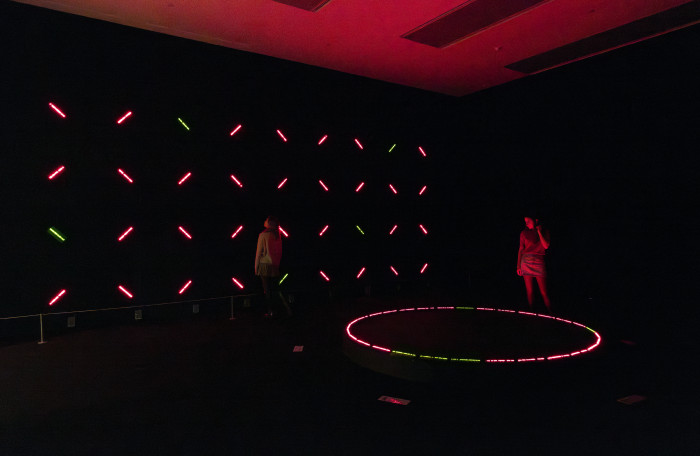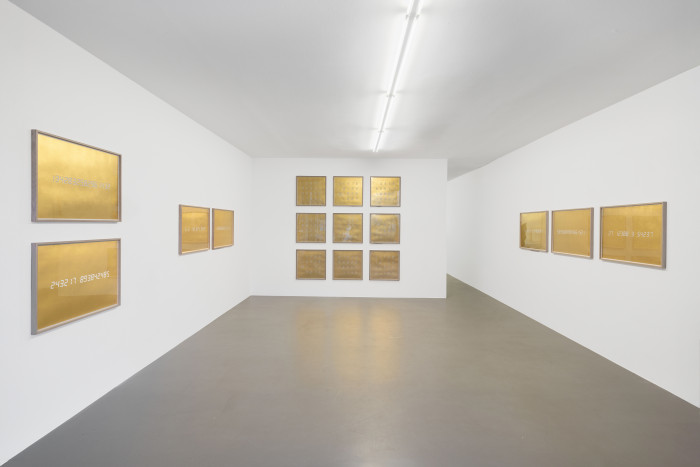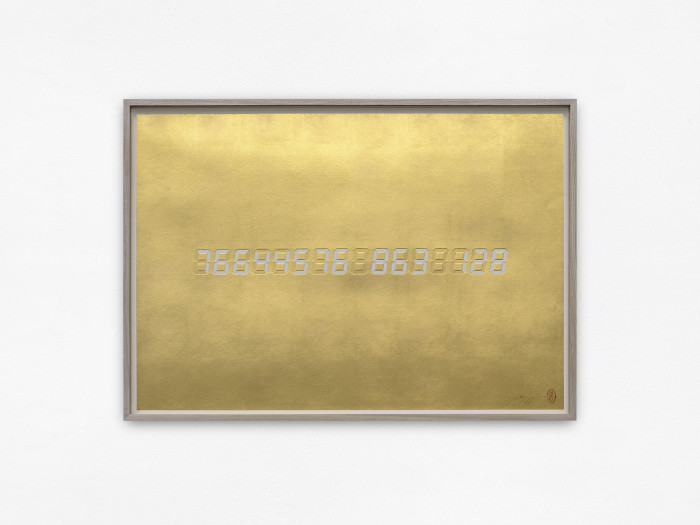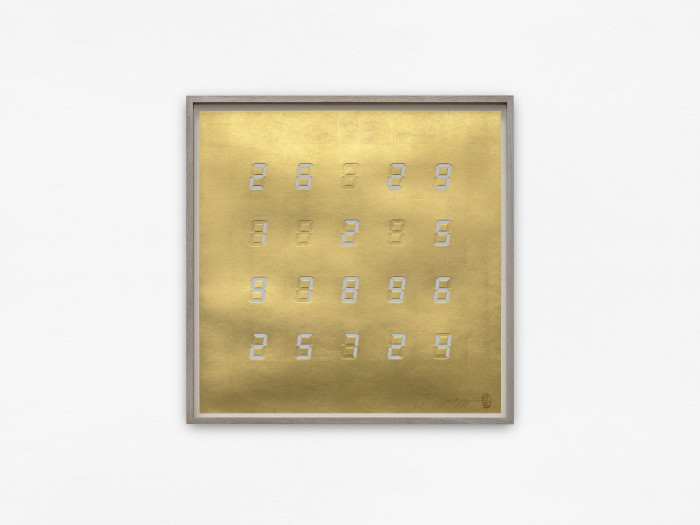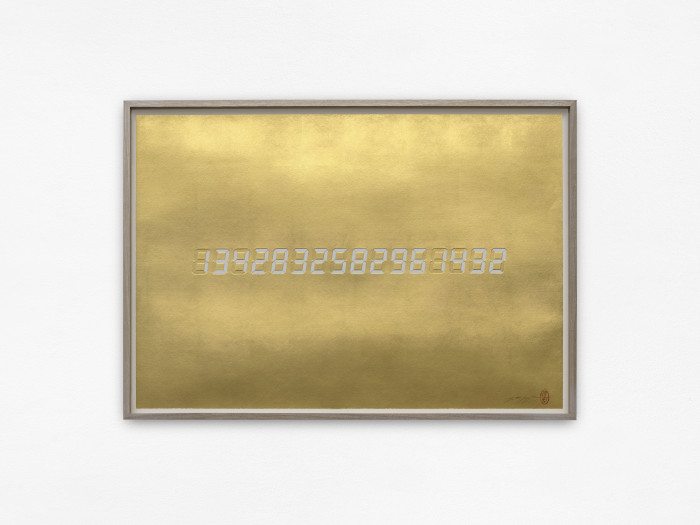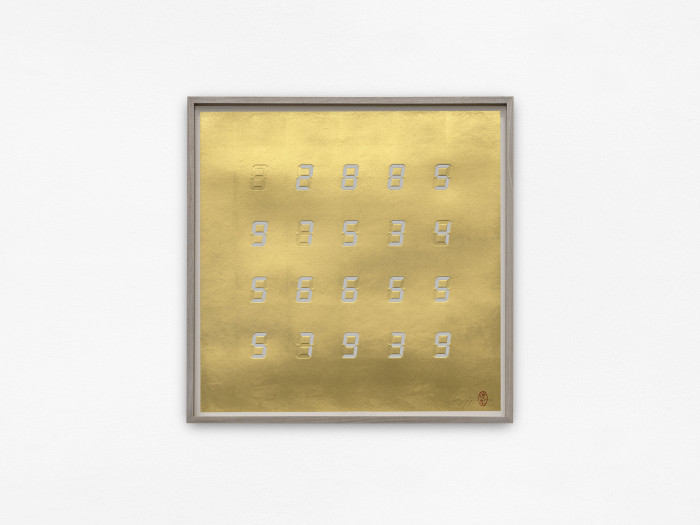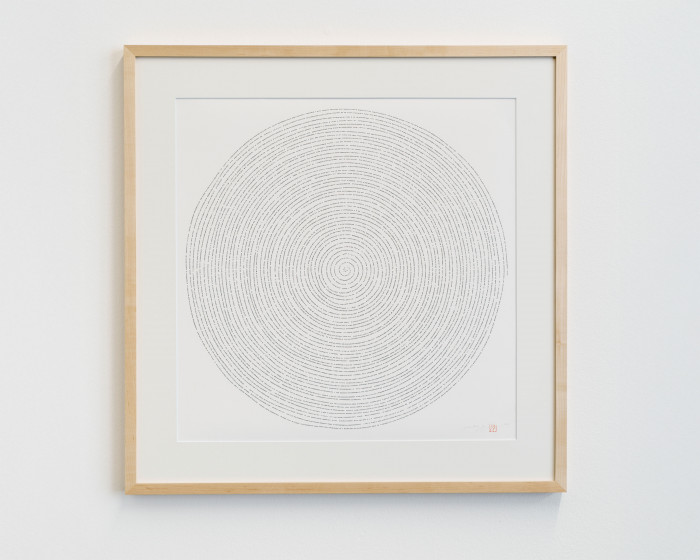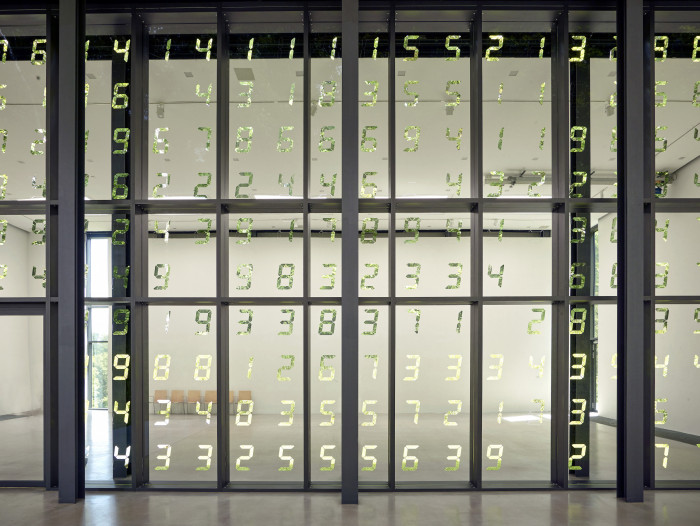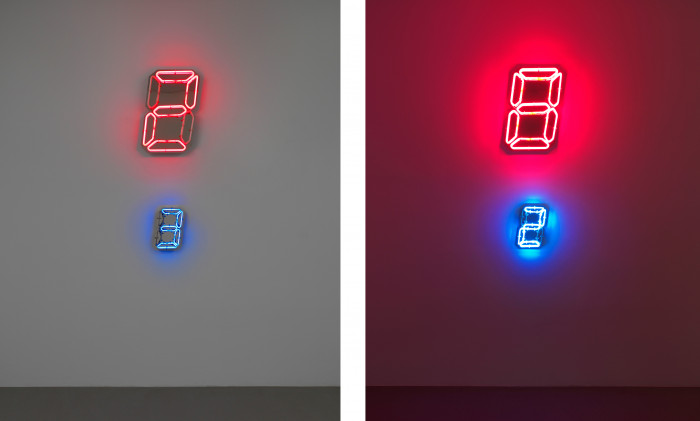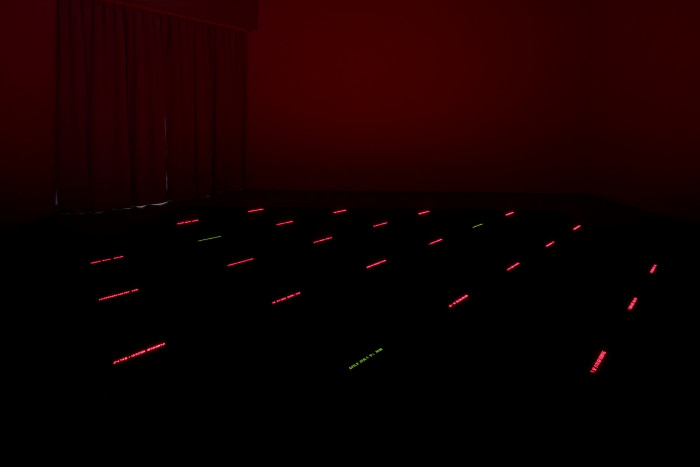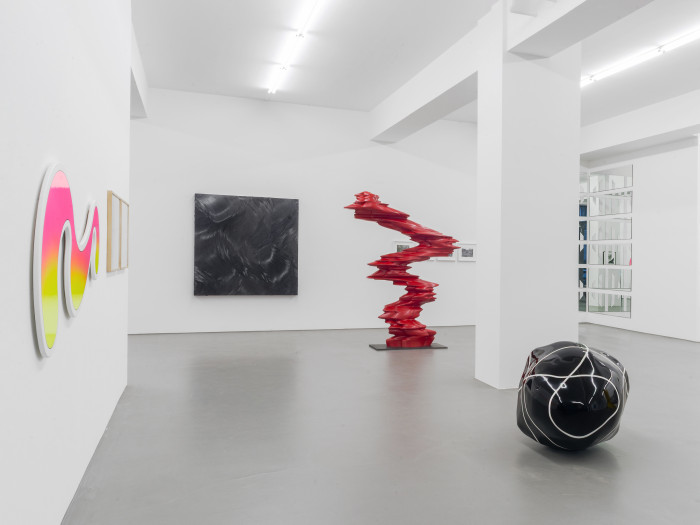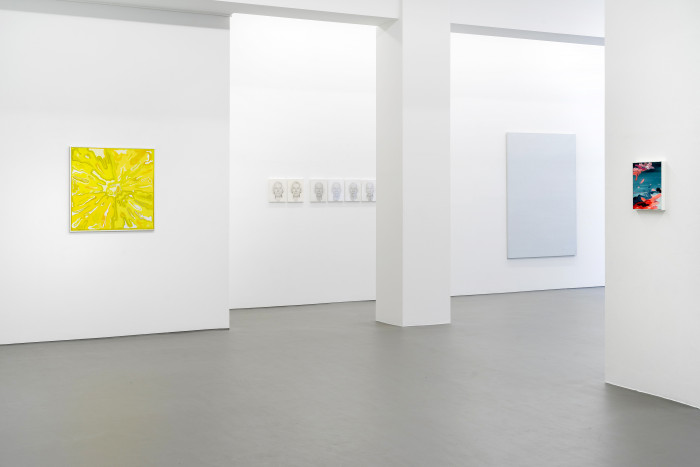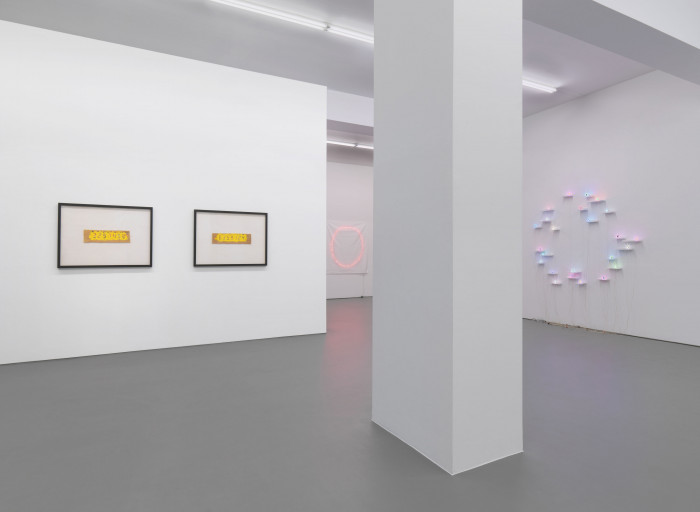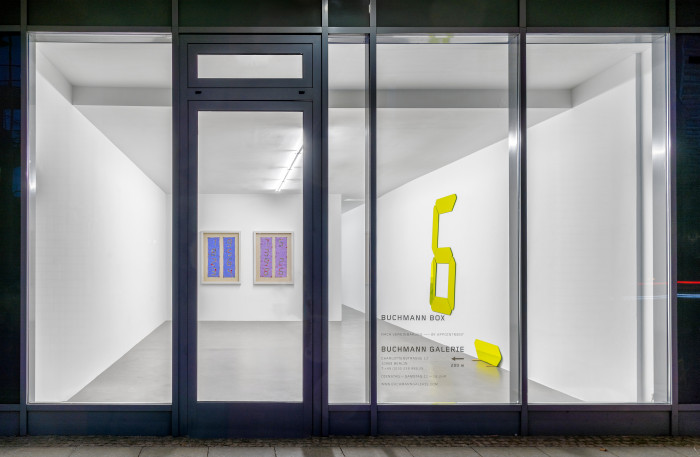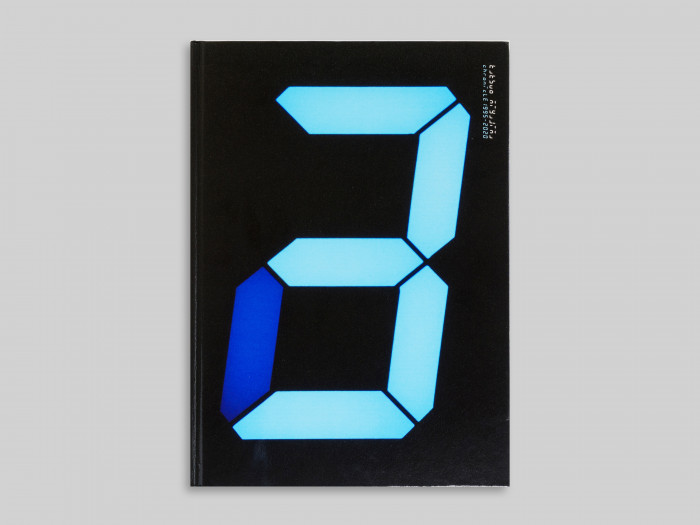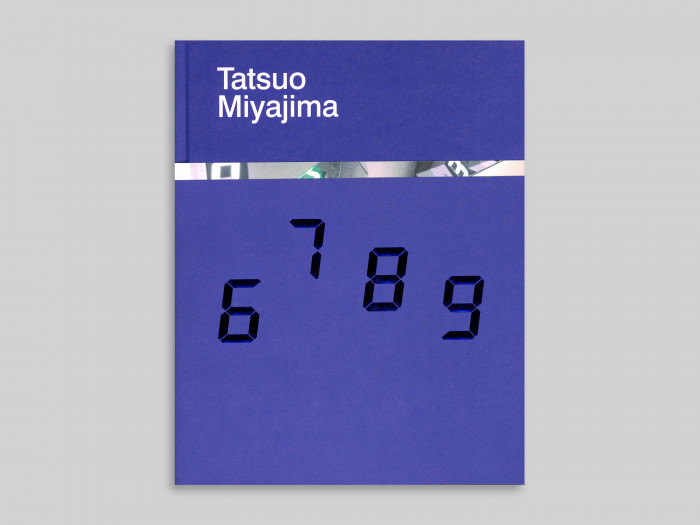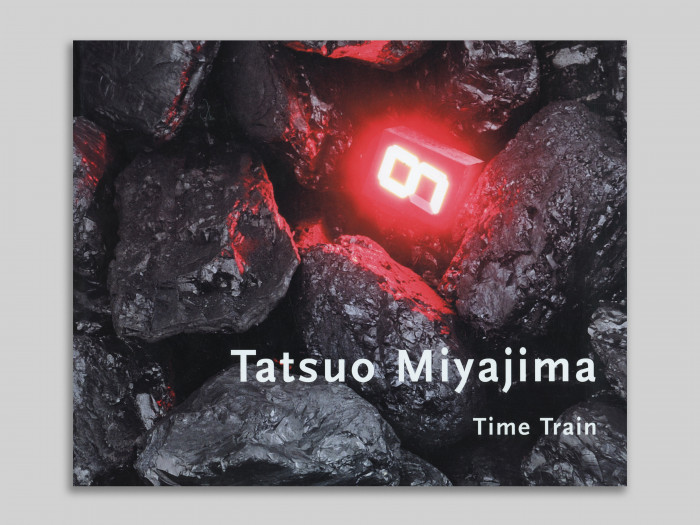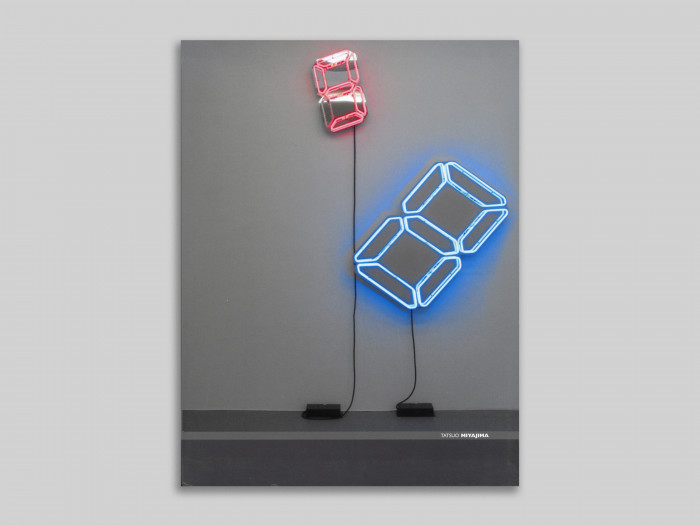Tatsuo Miyajima
Tatsuo Miyajima achieved international recognition for his works incorporating flashing light-emitting diodes (LEDs). Since the Japanese artist began working with LEDs in 1987, he has developed a distinctive body of work that is now synonymous with the artist.
Initially, he only used red and green LEDs to create reliefs and sculptures. A few years later, more advanced technology allowed him to expand his color spectrum to include blue and white, and today offers him a wealth of color possibilities.
Miyajima, however, does not rely solely on the engaging effect of the light-emitting diodes, which flash from 1 to 9 or from 9 to 1. Instead, he employs a variety of systems for visualizing the digits. The counting follows either a rhythm set by the artist or a randomly changing speed. Created are choreographies of an unpredictable visual array of emerging clusters and movements.
This can range from the use of a few LEDs to monumental works comprising 2400 LEDs such as Mega Death, a large-scale installation of blue LEDs that Tatsuo Miyajima installed for the first time in the Japanese pavilion at the Venice Biennale in 2001.
The counting of the diodes, which suggests a kind of movement in time and space, is not a purely technical, technicist matter for the artist, who was born in Tokyo in 1957. Quite the opposite: Miyajima imbues his diode clusters with meaning by forging a conceptual link between modern technology and Far Eastern Buddhist philosophy.
For him, the repeating series of numbers symbolize the cycle of life—the intertwining of individual and collective existence. “One constant in life is the fact that we are always changing,” says Miyajima. Therefore, the number 0 has no place in his work, since it symbolizes finality. “We humans are under the illusion that we can do anything, and we try to manipulate nature to our liking,” says Miyajima. “But nature and the universe behave in unpredictable ways.”
This unpredictable, permanent change, this uncertainty about what may come next, is reflected not only in his impressive works, but also in his artistic parameters: “Keep changing / Connect with everything / Continue forever!”
By fusing technology and spirituality, Tatsuo Miyajima’s work invites viewers to contemplate the transience of life and offers a vision of continuity that transcends the boundaries of time, space, and individuality.
Important works by the artist are represented in the collections of the Tate Gallery London, La Caixa Barcelona, the Deste Foundation Athens, the Museum of Contemporary Art Chicago, the Museum of Contemporary Art Tokyo, the Leeum Seoul, and—arranged through the Buchmann Galerie—the Kunstmuseum Bern, the Bayerische Staatsgemäldesammlung Munich, and the M+ in Hong Kong.
Further insights into the artist’s work are offered in the publication Tatsuo Miyajima—Connect with Everything, published on the occasion of the artist’s exhibition of the same name at the Museum of Contemporary Art Australia, 2017.
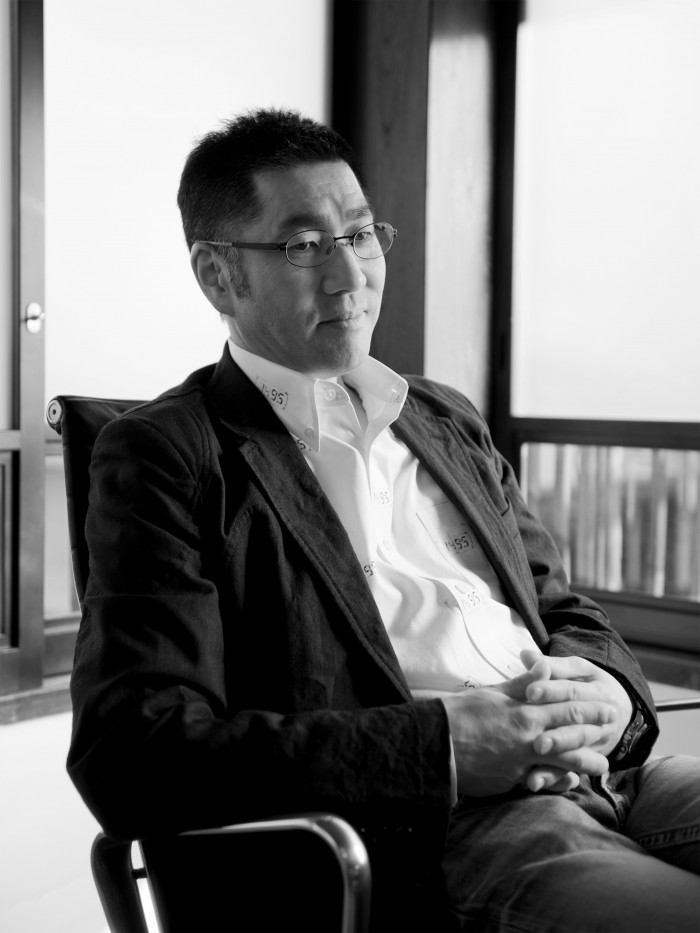
Selected Works
News
Gallery Exhibitions
Publications
Tatsuo Miyajima
Born 1957 in Tokyo. Lives and works in Ibaraki, Japan.
2012 - 2016 Kyoto University of Art & Design Vice President
2006 - 2016 Tohoku University of Art & Design Vice President
| 1986 | Completed postgraduate studies at Tokyo National University of Fine Arts and Music (M.A.) |
| 1984 | Graduated from Oil Painting Course, Fine Arts Department, Tokyo National University of Fine Arts and Music (B.A.) |
| 1998 | London Institute honorary doctorate |
| 1993 | Fondation Cartier pour l'art contemporain, Paris |
| 1990–1991 | DAAD Scholarship Berliner Kunstprogramm Berlin, |
| 1990 | ACC - Asian Cultural Council, New York |
National Museum of Modern Art, Kyoto, Japan
Hara Museum of Contemporary Art, Tokyo, Japan
Museum of Modern Art, Shiga, Japan
Nagoya City Art Museum, Nagoya, Japan
Museum of Contemporary Art, Tokyo, Japan
Panasonic Museum in Osaka, Japan
FARET Tachikawa, Tokyo, Japan
TV Asahi building, Tokyo, Japan
Tokyo Opera City, Tokyo, Japan
Chiba City Museum, Chiba, Japan
Group Home Sala in Florence Village, Akita, Japan
The Museum of Modern Art, Saitama, Japan
Contemporary Art Museum, Kumamoto, Japan
Toyota Municipal Museum of Art, Aichi, Japan
Saitama Prefectural University, Saitama, Japan
Izumi City Plaza, Osaka, Japan
Naoshima Contemporary Art Museum, Kagawa, Japan
Iwaki City Art Museum, Fukushima, Japan
Hiroshima City Museum of Contemporary Art, Hiroshima, Japan
M+ Museum, Hong Kong
Taipei Fine Arts Museum, Taiwan
Samsung Cultural Foundation, Seoul, Korea
Leeum, Samsung Museum, Seoul, Korea
Chinese Telecom, Taipei, China
Tate Gallery, London, UK
The British Museum, London, UK
Deste Foundation for Contemporary Art, Athens, Greece
Fondation Cartier pour l'art contemporain, Paris, France
Kunstmuseum Bern, Bern, Switzerland
Kunstmuseum St. Gallen, Switzerland
Université de Genève, Switzerland
La Caixa, Barcelona, Spain
Pinakothek der Moderne, Munich, Germany
Kunstmuseum Stuttgart, Germany
Fondazione TESECO per l'Arte, Pisa, Italy
Chateau La Coste, Aix-en-Provence, France
Modern Art Museum of Fort Worth, Texas, U.S.A.
San Francisco Museum of Modern Art, San Francisco, U.S.A.
Museum of Contemporary Art, Chicago, U.S.A.
Dallas Museum of Art, U.S.A.
Denver Art Museum, Denver, U.S.A.
Dannheisser Foundation, New York, U.S.A.
National Gallery of Canada, Ottawa, Canada
Oakville Galleries, Oakville, Canada
Australian Museum, Sydney, Australia
| 2017 | "Tatsuo Miyajima: Connect with Everything", Museum of Contemporary Art Sydney, with texts by Rachel Kent, Mami Kataoka, Sunjung Kim, Nobuko Nakanao |
| 2008 | "Time Train", Ferdinand Ullrich, Hans Jürgen Schwalm (ed.) with texts by Friedrich Meschede, Eugen Blume, Kunsthalle Recklinghausen, Kerber Verlag |
| 2007 | Rappolt, Mark, “The Time is now”, in: Art Review, Issue 07/ January 2007, p.38, London Borcherdt, Gesine, “Tatsuo Miyajima”, in: monopol – Magazin für Kunst und Leben, Issue 1/ 2007, p. 118, Berlin |
| 2005 | Asada, Akira + Miyajima, Tatsuo: “Commemoration Talks: Death and 20th century,” Minamishima, Hiroshi: “Light of Death, Again Detour Leading toward “Tatsuo Miyajima-Beyond the Death”, Tomisawa, Haruko: “Tatsuo Miyajima’s thoughts on Nature and Artificiality,” Honda, Yoshiko: “Tatsuo Miyajima: Eternal Light after Darkness,” BEYOND THE DEATH, Contemporary Art Museum, Kumamoto-CAMK, 2005, pp.17-31, 34-37, 38-41 42-45 (Jap / Eng) |
| 2004 | “Tatsuo Miyajima”, MACRO, Museo d'arte Contemporanea Roma, (cat.) |
| 2002 | “Tatsuo Miyajima - Count of Life”, Essays by Dan Cameron and Kim Sun Jung (English/Korean), Artsonje Museum, Gyeonju and Artsonje Center, Seoul, (cat.) |
| 2000 | “Tatsuo Miyajima, Counter Pieces”, Essays by Johann-Karl Schmidt, Michael Auping and interview by Janice Hart and Alan Woods (German/ English), Galerie der Stadt Stuttgart, (cat.) “Tatsuo Miyajima, Mega death: shout! shout! count!”, Essays by Junichi Shioda and Mami Kataoka (English / Japanese ) Editor Kataoka Mami, Tokyo Opera City Art Gallery, (cat.) |
| 1996 | “Tatsuo Miyajima, Big Time”, Essays by Marla Price, Susan Freleger Brades, Michael Auping und Tatsuo Miyajima (Englisch), Modern Art Museum of Forth Worth and Hayward Gallery, London, (cat.) “Tatsuo Miyajima, Whole Relativity of the Cosmos 133651”, Essays by Francine Périnet, Marnie Fleming and Grant McCracken (English) Center for Contemporary Art CCA Kitakyshu Kitakyushu + Korinsha Press&Co.,Ltd, (cat.) “Tatsuo Miyajima, Time House”, Gairloch Gallery, Oakville Galleries |
| 1993 | “Tatsuo Miyajima”, with an interview by Bernhard Bürgi and an essay by Luk Lambrecht (German/ English), Kunsthalle Zürich und Oktagon Verlag, München & Stuttgart |
| 1991 | “Tatsuo Miyajima”, Essay by Lynne Cooke and Jos Poodt (German/ English/ Dutch and Japanese), 133651 Museum Het Kruithuis, `s-Hertogenbosch and daadgalerie, Berlin, (cat.) |
| 2005 | ARTISTS SUMMIT, KYOTO, Kyoto University of Art and Design, Kyoto, Japan |
| 2002 | Collaboration with SOPHNET (fashion design brand) 2002 A/W Collection Tokyo 1000 Real Life Project - Death Clock, Tokyo |
| 2000 | Floating Time - Hospice Project, Sotoasahikawa Hospital, Akita |
| 1998 | Portfolio for The Edge of Awareness |
| 1995 | Portfolio for 4. Uluslararasi Istanbul Bienali-ORIENT / ATION |
| 1994 | Mirror, multiple, Spiral, Tokyo |
| 1993 | Over Economy, acrylic, pencil on bank note \10,000 |
| 1992 | Project for PARKETT |
| 1984 | Time Funeral, record jacket, SMS Records |
